The use of straw marquetry in the construction of furniture is a great option to consider if you want to lend an air of refined sophistication to the aesthetic of your home. This time-honored art form involves the creation of intricate patterns and designs on a variety of surfaces, including furniture, by applying straw that has been dried and colored.

You can give your interior design a distinctive and eye-catching boost by incorporating straw marquetry furniture into it. The natural beauty of straw marquetry is sure to impress, regardless of whether you favor more traditional or more contemporary design. Why not investigate the potential applications of this age-old technique and make your very own piece of furniture using straw marquetry right this very minute?
What is straw marquetry?
Straw marquetry is a centuries-old art form that has recently made a comeback in home decor. It entails intricate designs made from various lengths and colors of straw, which are frequently combined with other materials such as paper, glass, or even metal wire. Straw marquetry is made up of small pieces that are arranged to form geometric or other decorative patterns or images. This eye-catching craft adds a unique touch to furniture, wall panels, jewelry boxes, and a variety of other items.
The artisan creates straw marquetry by selecting straws in the desired lengths and colors for the design. They can be collected from plants or bought online. The pieces are then cut into thin strips with a tool known as a “stripping comb.” Following that, each piece is glued to a substrate (e.g., MDF board) in the intended pattern, then burnished with a flotter brush when dry to ensure that all pieces fit tightly together. Other elements, such as colored paper, could be added at this stage for added flair. Finally, polyurethane varnish is applied to the finished work of art to protect and preserve it.
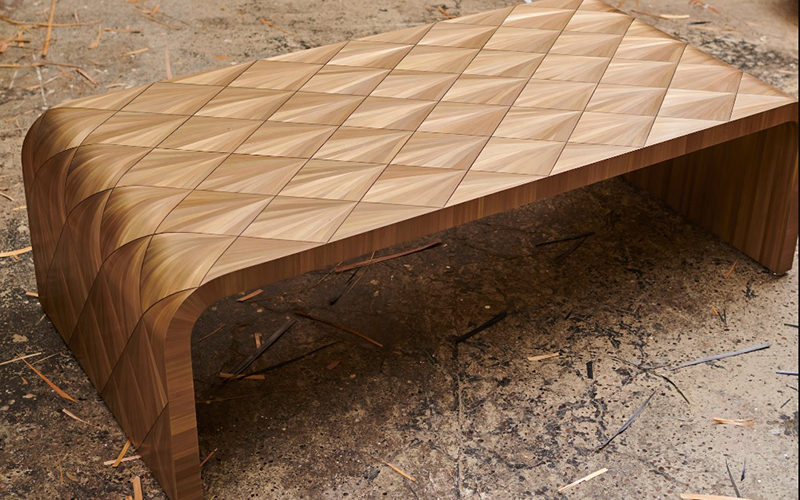
The use of colorful straws makes it simple to create vibrant designs and patterns, which are ideal for furniture detailing, frames, or wall decorations in neutral-colored rooms. For example, in a pastel-colored room, you could add some contrast by adorning your cabinets with dark red wheat straw motifs. Similarly, brightly colored complex weaves can transform seemingly ordinary surfaces into extraordinary works of art, such as geometrically shaped headboards with light blue strawwork accents or dressers with multicolored spirals of wheat stalks.
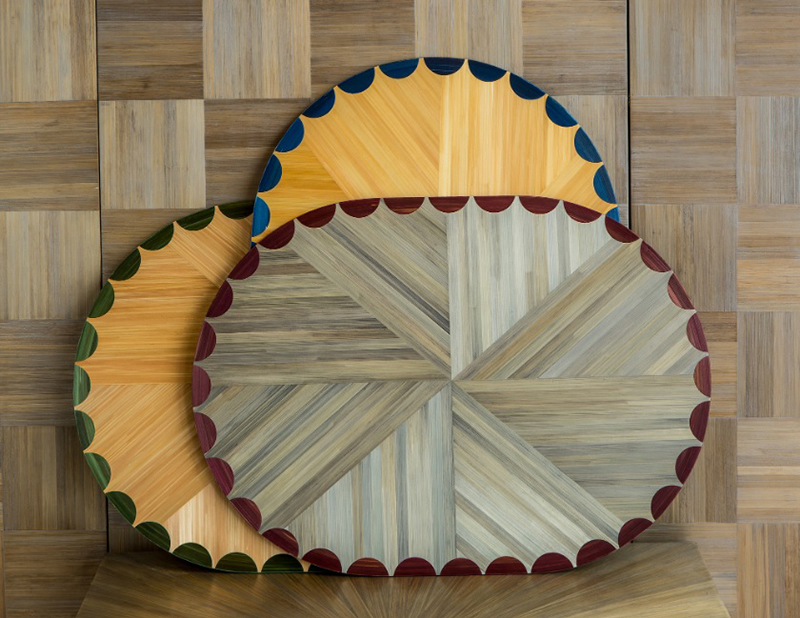
Those who want to incorporate this age-old craft into their home space do not need to break the bank for unique décor ideas because the entire process can get expensive if shopping for high-quality handcrafted items online. Instead, consider creating the designs themselves using inexpensive tools found in most stores! Furthermore, DIY projects provide something completely unique that cannot be found anywhere else: timeless memories as well as the great satisfaction of watching stunning pieces grow from conception to completion.
Materials for Straw Marquetry
Straw marquetry is a decorative art form named after the common material used to make it: straw. It has been practiced in many parts of the world for centuries, most notably in China and Japan. The method involves cutting and shaping straw into intricately arranged patterns, which are then applied to furniture or other objects. It adds color, texture, and pattern to whatever it is applied to, and no two pieces of straw marquetry are alike.
Straw marquetry uses reeds or stems of various materials (such as bamboo, rye grass, or Milanese), dyed with natural or chemical dyes. This type of artwork frequently incorporates soaked millet or wheat into the design, and other colors, such as blue, can be achieved by soaking straws in indigo dye before assembling. In some cases, colorful papers are cut into thin strips and used as formers for curved shapes such as circles or crescents; fabrics may also be used to decorate surfaces. Each component piece is meticulously hand-assembled onto the board backing with special adhesive, resulting in clean edges that retain their structure without sagging over time.
Because of its resistance to wear and tear, fine acacia wood is sometimes used for indoor panels when building larger objects such as chests of drawers. Straw marquetry compositions can be overlaid on solid wood or MDF boards (medium density fiberboard) for more everyday décor items such as trays and boxes, and then coated with waterborne lacquer, heat-resistant shellac wax, or even tung oil if necessary. Special care must be taken during assembly to ensure that no liquid seeps through any gaps, resulting in staining and discoloration of the underlying surface when exposed to direct light sources over time.
Whether you take up this beautiful traditional art form yourself or admire it from afar, an impressively intricate work of straw marquetry looks beautiful and stands out wherever it sits!
Straw marquetry? No, it’s not a new type of cocktail…
Although the craft of straw marquetry may have been extinct for quite some time, Lison de Caunes is one of the artists who has kept this art form alive. She is the granddaughter of the Art Deco designer André Groult, and she has not only inherited her grandfather’s passion for this one-of-a-kind technique but she has also created her own designs by employing this time-honored artistic practice.
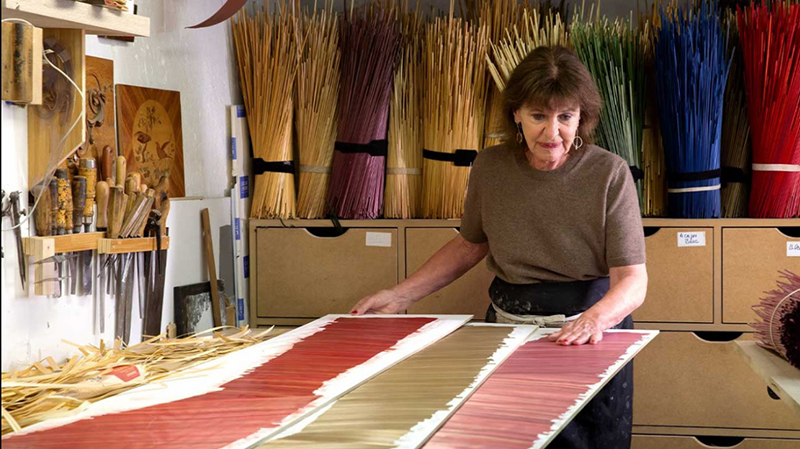
De Caunes is considered a master of straw marquetry, and the designs that she creates are a testament to both her creativity and her expertise. Although there are certain patterns that are characteristic of the Art Deco period, such as the fan and the sunburst, de Caunes is constantly attempting to create new and contemporary designs. Her innovative approach to straw marquetry has assisted in reviving this long-forgotten craft, and her designs continue to serve as a source of inspiration for other artists and designers all over the world.
Whether you are more of a fan of classic or contemporary design, the creations that de Caunes has made using straw marquetry are certain to pique your interest. This time-honored method has been successfully brought back to life thanks to her singular aesthetic and forward-thinking designs; as a result, admirers of both art and design should make it a point to check it out.
I give straw marquetry a new life, De Caunes said
It is clear that straw marquetry is a labor of love for Lison de Caunes, as evidenced by the breathtaking works of art that she creates using this time-honored technique. She makes furniture, decorative objects, wall panels, floor tiles, and even doors using this conventional method of artistic expression. However, what distinguishes de Caunes from other artists who work in straw marquetry are the vivid and eye-catching colors that she uses.
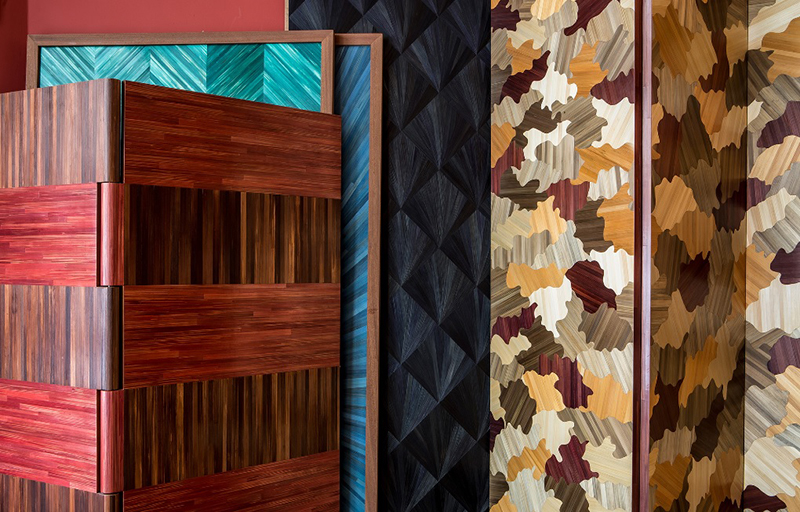
The innovative spin that De Caunes gives to this time-honored technique consists of experimenting with colors that are not commonly associated with straw. The experimentation that was done resulted in the creation of pieces that are not only unique but also stunningly beautiful. Although the process of straw marquetry requires a lot of manual labor and can take several months to complete, the finished product is undeniably beautiful and worth every minute of your time.
Straw marquetry is a dying art form, but De Caunes is determined to bring it back to life with her innovative designs, which have already been successful in doing so. Not only are the items she crafts useful, but they are also true works of art in their own right. The level of attention to detail is truly remarkable, and each individual piece is one of a kind.
Lison de Caunes’ commitment to handmade, labor-intensive craft is a breath of fresh air in a world where mass-produced items dominate the market. Other artists and designers all over the world find their work inspired by her breathtaking works of straw marquetry, which are a testament to the beauty of traditional art forms and serve as an inspiration to them.
Straw marquetry for beginners
If you are a novice artist who is interested in trying their hand at a new art form, then straw marquetry might be the perfect medium for you to work with. This one-of-a-kind method involves using dried-out straw that has been colored in order to create elaborate designs and patterns on a variety of surfaces, such as tiles, furniture, and other objects. Straw marquetry, despite the fact that it might appear to be a difficult art form, is in fact an excellent choice for novices.
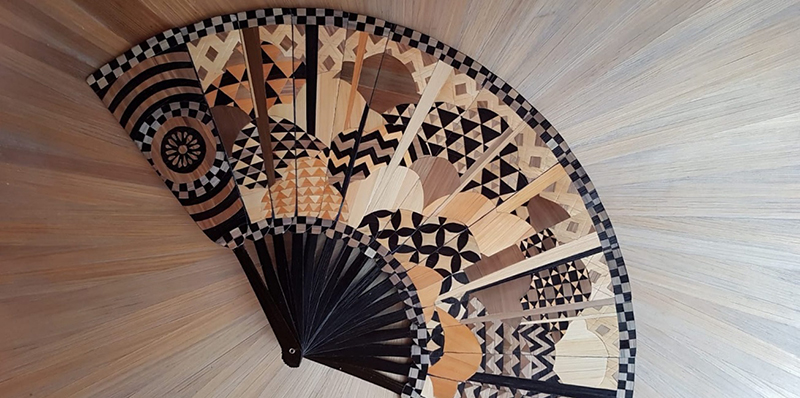
The only things you will need to get started with straw marquetry are a few simple tools and some dried straw. You will soon be able to create stunning pieces of straw marquetry that you can display in your home if you put in the effort to practice what you learn from the numerous tutorials and resources that are available to guide you through the process that can be found online.
Straw marquetry is not only an enjoyable and interesting hobby, but it is also an excellent way to add one-of-a-kind and attention-grabbing details to your interior design. As a result, why not give it a shot and see where your imagination leads you? You just might find a newfound appreciation for this time-honored art form if you exercise some restraint, perseverance, and patience.
Design Benefits of Incorporating Straw Marquetry
Straw marquetry is a centuries-old art form in which straws are used as a medium to create mosaic-like designs. It has been around for centuries, with roots in ancient Egyptian, Chinese, and Japanese cultures. This one-of-a-kind technique involves the use of thin strands or strips of gold or silver that have been pre-cut into the desired shape for intricate patterns. Nowadays, straw marquetry has made a huge comeback in popular design projects and is widely admired in industries such as interior design, furniture manufacturing, and fashion. Let’s look at some of the significant design advantages of incorporating such a technique into your work.
The first advantage is its visual appeal. Using straw’s distinct texture and stitching it together, you can create three-dimensional visuals that would be impossible to achieve with traditional flat materials such as wood and paper. The interaction of color, light, and shadow captivates viewers; imagine how appealing pieces created using this process would look hanging on walls or as part of stylish furniture sets! When using straws, you can also incorporate a variety of colors, ranging from white to dramatic darks, giving you complete control over creating dynamic visual effects.
The ability of straw marquetry to tell stories through shapes and symbols is the second design benefit. Straw marquetry represents various cultural decorative traditions, providing numerous opportunities for imagination and self-expression. Geometric patterns are a popular choice in this technique because they allow you to communicate ideas vividly through the interactive arrangement of shapes and figures. If, on the other hand, you want to elicit emotion through your work, try experimenting with abstract composition through vivid graphics or even figurative scenes where each strand stands out clearly as an individual piece but comes together seamlessly to form an overall masterpiece.
Another benefit of using straw marquetry is the ease of customization; whether it’s standard templates designed simply or tailored works with complex, detailed structures, literally anything is possible! Also, because it involves working in thin, lightweight paper-weaving layers, flexibility becomes an advantage when constructing complicated elements without destroying the entire frame of your work piece.
Finally, many people choose straw marquetry as a foundation for their projects because it is cost-effective, especially when compared to other materials, which can quickly become expensive depending on the quantity and quality standards required to realize specific projects perfectly without compromising the visual sophistication and integrity aspects of any kind of artisanal endeavor.
In conclusion, the design advantages of using straw marquetry should not be overlooked; from delivering startling aesthetics to meaningful symbolism accompanied by friendly affordability, there isn’t much more that consumer-sensitive designers could ask for from a creative expression platform such as this one!
Materials and Skill Level Needed for Applying Straw Marquetry
Straw marquetry is an ancient craft that has been practiced for centuries, first appearing in the fifteenth century. Straw marquetry is still popular among hobbyists and home crafters today. This craft entails creating intricate designs on wood with a pattern created from pressed straw strips. In terms of materials, straw marqu requires only pressed straw, glue, and your choice of wood board or substrate (which can range from basic plywood to more exotic hardwoods). Depending on the type of wooden substrate you’ll be using, you may need to pick up a few tools along the way, such as clamps or screws if you’re working with a thicker piece of wood.
Most straw marquetry artisans prefer to use specially made pressed straw sheets when preparing the straw material. These sheets are available pre-made at some craft stores, or you can buy larger pieces of hay and press them yourself at home using a vacuum sealer bag (which both compresses and fixes the shape of the straw). The thinner and finer the straw strips used, the easier they are to manipulate into the desired design shapes—something to keep in mind when deciding what type of straw sheeting to use!
The skill level required to apply strawberry marquetry varies greatly depending on the type of design you’re attempting to create and how detailed it is. Anyone with moderate experience with crafting or carpentry projects, such as cutting out circles or stars, should be able to complete them fairly easily with minimal guidance. More complex project ideas, such as making images with many details or curves or spots that require precise stitching or cutting techniques, necessitate more advanced skills that take time and practice to master. Mastery isn’t required if you just want to try your hand at this fun project; with patience and plenty of trial-and-error experimentation, truly beautiful pieces can be achieved regardless of skill level!
Practical Considerations When Applying Straw Marquetry to Your Home
Straw marquetry is a time-honored art form that dates back to the 16th century. It adds texture and color to any home décor, from traditional to modern, as an upcycled material. However, there are some practical considerations you should consider before implementing this type of design in your interior space.
To begin, when applying straw marquetry to your home, the adhesive you use is critical. Avoid using solvents or glues like acrylic latex, which can yellow over time. Instead, use an archival adhesive like PVA or hot hide glue. Test a small area first to see if there are any added chemicals that could harm the wood substrate or interfere with the final patina result. When reusing old straw pieces, make sure that no mold or mildew has developed on the backside.
Light levels also influence how well your straw marquetry piece will last; too much light can dry out the straw over time, causing brittleness and breakage, so only place your project in rooms where direct sunlight is limited, either naturally or artificially. Keep other sources of high heat away from your project, such as chimneys and heating vents, which could significantly reduce its lifespan. Finally, add clear sealant coatings to surfaces to help protect against wear and tear from spills and muddy footwear.
Straw marquetry is a great sustainable option for decorating any living space because the unique designs it produces can beautifully finish off an interior design scheme while also reducing waste headed for our landfills.
Tips for Creating a Refined Elegance with Straw Marquetry
Straw marquetry is a centuries-old craft capable of producing elegant and refined works of art. The intricate designs distinguish it from other forms of marquetry, which are traditionally made with thin, hand-cut strips of straw and paper. You can create artistic pieces of furniture or decorations that will add sophistication to any room with careful attention to detail and skillful execution. Here are some ideas for using straw marquetry to achieve a refined elegance.
- Carefully choose your materials: Choose high-quality materials to ensure the complexity and longevity of your project. Choose tools that are specifically designed for this type of marquetry to avoid damaging delicate straws when cutting them. Traditionally, quality papers such as parchment, rice paper, fine bamboo paper, or good-grade linen were used for straw marquetry. Choose those that are free of blemishes and tears in order to create a professional-looking design.
- Plan ahead: Straw marquetry requires attention to detail, so it’s critical to sketch out your design before beginning to work with the material. This can help save time and reduce waste because construction mistakes can be costly in terms of both money and effort. Create a plan that outlines each section and then refer to it as needed throughout the project.
- Cut meticulously: Cutting into strips can be destructive if not done correctly, so great care should be taken when performing this task to achieve satisfactory results. Begin by dry fitting all pieces together and trimming as needed; use rulers, knives, scissors, and tweezers wherever possible to maintain accuracy in cutting techniques and achieve detailed cuts along curves or create various shapes as needed depending on your design preference.
- Glue precisely: Using appropriate adhesives such as wood glue (for a wooden base) or standard craft glue on paper can help bring together individual pieces of straw effectively, keeping edges tight at all times, which later greatly aids in achieving the desired design motif. Take care that until you apply sufficient pressure, dried glues loosen up easily, making them more susceptible to accidental shifting due to picking up items placed, as well as ruining the entire artwork needlessly.
- Be patient: Straw marquetry is an extremely labor-intensive task that necessitates hours upon hours of technicalities. Take a lot of resilience and enjoy the end result that justifies your perseverance in servitude as a directly proportional practice. obtain level expertise, hopefully soon, thanks to the mastering tips just shared, but being too eager to proceed with nature experimentation may result in unpleasant results.
- Allow your imagination to guide you: Straw marquetry is a vastly versatile medium that inspires a delightful array of possibilities when meticulously incorporated into a wide canvas transversely culminating treasured accessory interior setting. A completely one-of-a-kind mélange of whimsy, functional aesthetic luxury, and a unique masterpiece arises. Develop personable preferences and pursuits that grace the home, whether floor tables, chairs, or walls. Additional resources alongside a DIY sense of accomplishment exceeds alone. Prepare to astonish family members and surprise guests. Ease large-scale projects. Enlist the assistance of an esteemed team of professionals to help with various phases of completion, small element introduction, and adding life.
Conclusion
Straw marquetry is an excellent way to add a unique, sophisticated elegance to your home. Straw marquetry has been popular in interior design since the 16th century, and while its popularity has ebbed and flowed over the years, it is still one of the most fashionable ways to adorn walls and furniture. This beautiful art form, with proper care and maintenance, will last for generations, add a vibrant splash of color and texture to any space, and provide you with refined elegance for years to come.
Excerpt
Straw marquetry is an ancient craft that has been used to decorate furniture, walls, and other items for centuries. With its finesse and sophistication, this poetic art form will complement any home. Creating an eye-catching interior design is simple with the careful use of colors and textures. You’ll also benefit from having all-natural materials in your home. Continue reading to learn more about incorporating straw marquetry into your home for refined elegance!
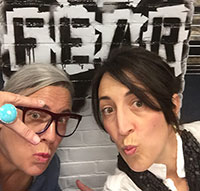
We’re Emma Carole Paradis and Kimberly Carole, the owners and designers of Impeccable Nest, based in Bedford, New Hampshire. A mother-daughter team with a love of design. Originally from Manhattan Beach, California, now based in Bedford, New Hampshire, we bring a Southern California cool and New England tradition to our design. Not only do we work together…we also live together in a multi-generational home…and a home that they are known to design for others.
